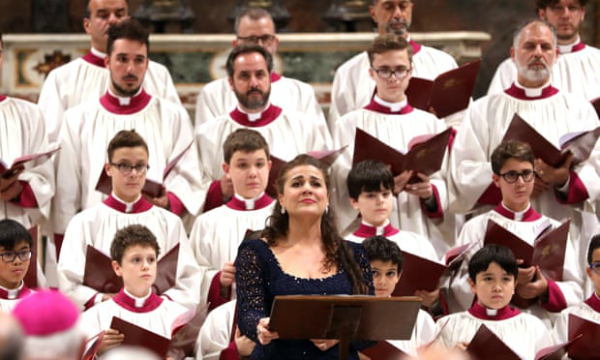A massive auction of rare autograph scores and letters dating from the medieval era through to the romantic age will commence December 4, 2018, London auction house Sotheby's announced today.
With estimated bids ranging from £300 to £70,000 and well over 100 manuscripts and music related memorabilia to be made available for prospective buyers, one is sure to find something special and unique for even the most difficult-to-shop-for family member, colleague or friend.
Highlights of the impending auction include autograph manuscripts of two, hitherto considered lost lieder written in the hand of Franz Schubert: his Tischler-Lied (D274) and Todtenkranz für ein Kind (D275), composed in 1815 during his so-called 'annus mirablis,' his most highly productive year.[1]
The manuscripts are exceedingly rare - believed to be the only known autographs of the two lieder (having been formally regarded as "lost" in the Schubert Thematic Catalogue) and contain the composers' own handwritten annotations and additional verses of text.
Also up for auction will be a hitherto unknown manuscript of the first two movements of English composer Frederick Delius' 1888 String Quartet in C minor, as well as manuscripts of Johannes Brahms, Maurice Ravel, Felix Mendelssohn, Engelbert Humperdinck and Richard Strauss, and will include an exciting detailed scenario and prose draft of Richard Wagner's (left unorchestrated) music drama Wiland der Schmied (WWV82),[2] written in the composers' own hand in dark brown ink, signed and dated “Richard Wagner (Paris, 11 märz 1850) (Zürich, 8 October 1850.)"
*CLICK TO ENLARGE* LOT 330: Richard Wagner, Autograph manuscript prose draft for the 3-act opera
"Wieland der schmied" [wwv 82], signed and dated ("Richard wagner"), 1850 | Sotheby's |
"Wieland der schmied" [wwv 82], signed and dated ("Richard wagner"), 1850 | Sotheby's |
The Music, Medieval and Renaissance Manuscripts and Continental Books auction at Sotheby's is scheduled to begin at 10:30 am GST December 4, 2018.
To explore these and the other numerous manuscripts and memorabilia, visit Sothebys.com.
Footnotes:
[1]To quote from Schubert biographer Brian Newbould: "The year 1815 has been called Schubert’s annus mirabilis. This hardly overstates the case. His output in this year can be summarised as: four Singspiele, a symphony and a half, a string quartet, nine works for solo piano, eight or nine church works involving orchestra (from the 109-bar Offertory (D181) to the Mass in G major, (D167), some two dozen partsongs mostly with piano accompaniment, and about 140 songs." - from "Schubert: The Music and the Man," pp. 40, University of California Press, 1992-Rose.
The Schubert manuscript is listed as LOT 316 at Sotheby's.
[2]Wagner's draft for the libretto of his unrealised opera Wieland der Schmied (Wieland the Smith), which has been likened by one biographer as being his "most frankly autobiographic[al]" libretti, was inspired by Hector Berlioz' Romeo and Juliet symphony, and was drafted in the hopes of gaining an audience at the Paris Opéra. Wagner even toyed with the notion of presenting the finished libretto to Berlioz himself for the latters' orchestration.
The draft was originally published as an appendix to Richard's essay The Art-Work of the Future (Das Kunstwerk der Zukunft), a prospective vision on the idyllic aspirations of art and of Germanic legend. Wieland der Schmied fulfills the latter category - it is based on the Germanic legend of Wayland Smith.
Ultimately, Wagner would abandon the work - a move understood by scholars to have been the result of the assumption on the part of the composer of the perceived indifference of the French audience on such subject matters. Wagner attempted to have his father-in-law, Hungarian pianist and composer Franz Liszt orchestrate the work, however the latter declined the offer. An adaptation of Wagner's libretto would be scored by the 19th century Slovak composer Jan Levoslav Bella (written by O. Schlemm) between 1880 and 1890. That opera premiered in Bratislava, Czechoslovakia in 1926, and was subsequently reprised in Slovak under the title Kováč Wieland.




















